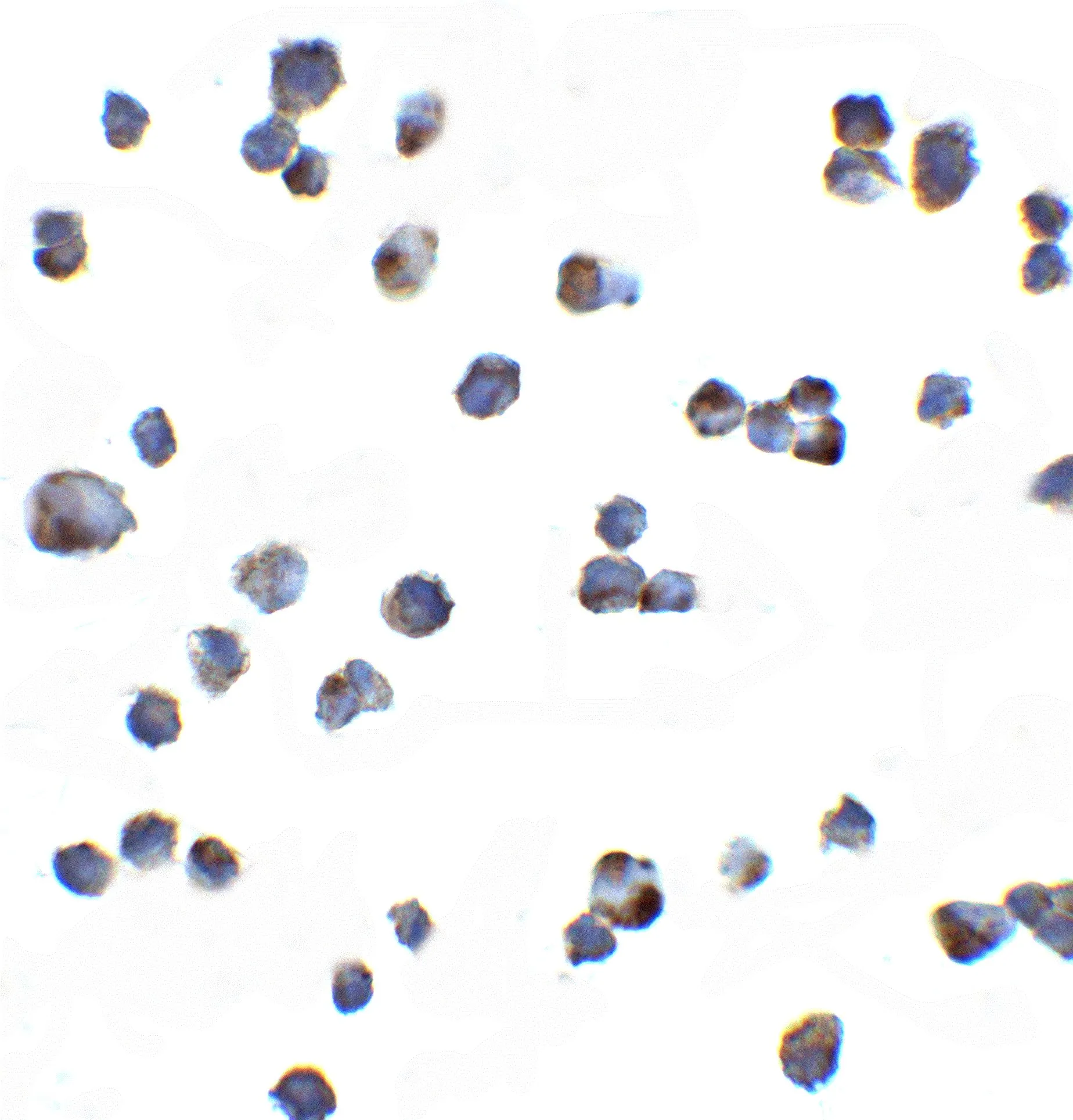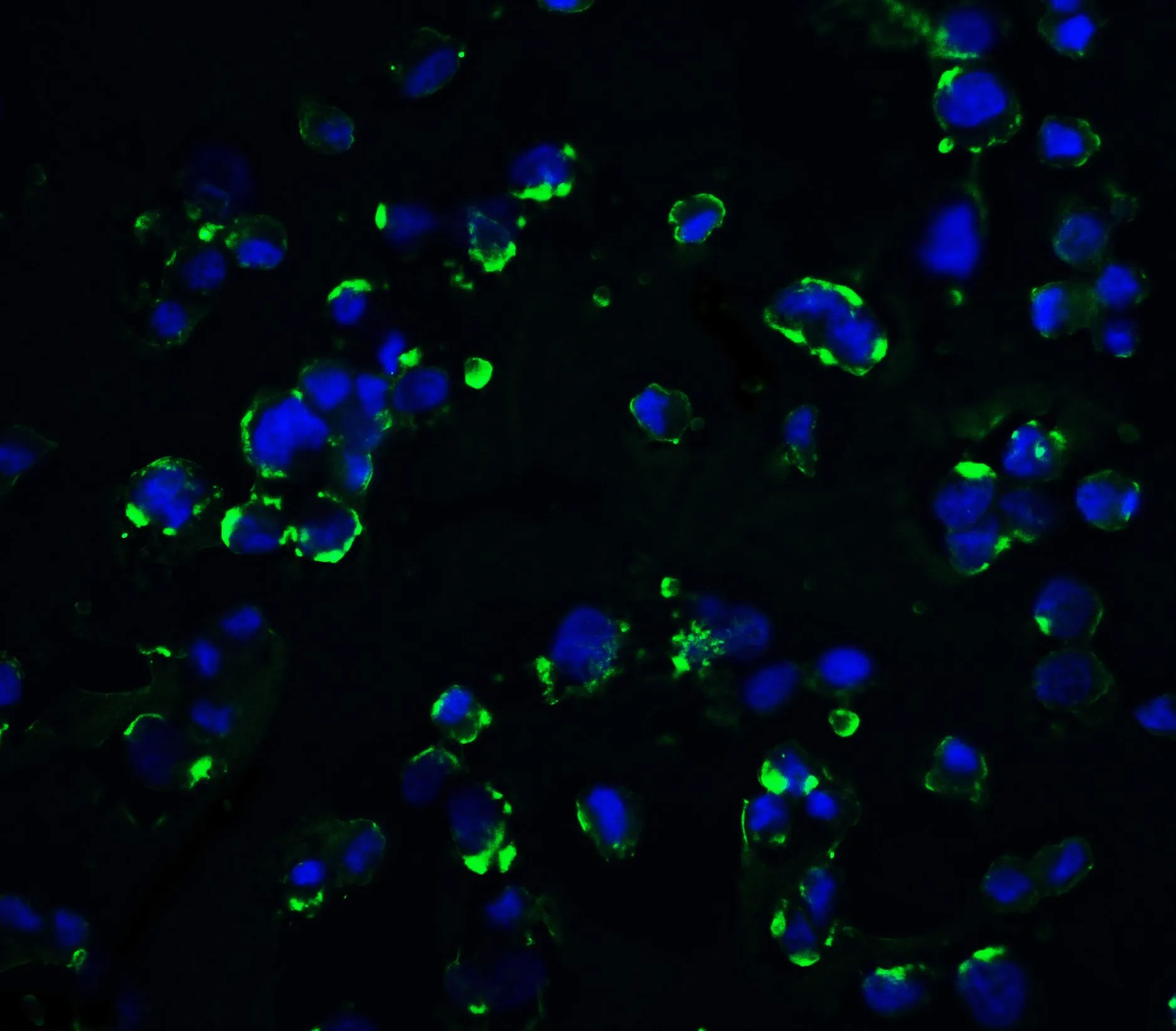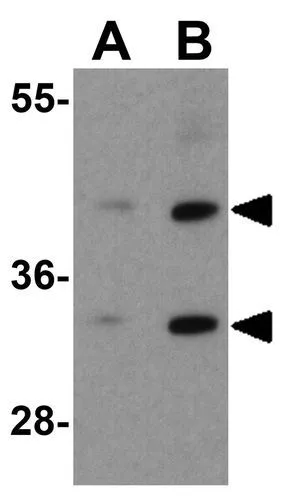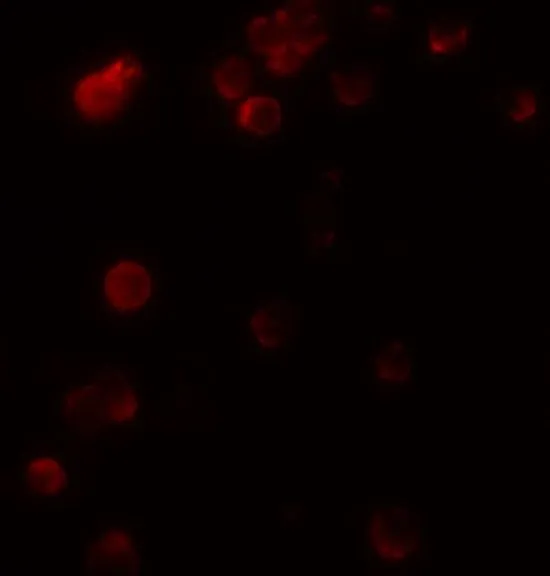
GTX31949 ICC/IF Image
KIR2DS2 antibody

GTX31949
ApplicationsImmunoFluorescence, Western Blot, ELISA, ImmunoCytoChemistry
Product group Antibodies
ReactivityHuman
TargetKIR2DS2
Overview
- SupplierGeneTex
- Product NameKIR2DS2 antibody
- Delivery Days Customer10
- ApplicationsImmunoFluorescence, Western Blot, ELISA, ImmunoCytoChemistry
- CertificationResearch Use Only
- ClonalityPolyclonal
- Concentration1 mg/ml
- Gene ID100132285
- Target nameKIR2DS2
- Target descriptionkiller cell immunoglobulin like receptor, two Ig domains and short cytoplasmic tail 2
- Target synonyms183ActI; CD158 antigen-like family member J; CD158b; CD158J; cl-49; killer cell immunoglobulin-like receptor 2DS2; killer cell immunoglobulin-like receptor KIR2DS2; killer cell immunoglobulin-like receptor, two domains, short cytoplasmic tail, 2; killer-cell Ig-like receptor; killer-cell immunoglobulin-like receptor two domains short tail 2 protein; KIR2DL1; KIR-2DS2; KIR2DS2 Killer-cell Immunoglobulin-like Receptor; MHC class I NK cell receptor; natural killer associated transcript 5; natural killer cell inhibitory receptor; NK receptor 183 ActI; NKAT5; NKAT-5; p58 killer cell inhibitory receptor KIR-K7a; p58 natural killer cell receptor clone CL-49
- HostRabbit
- IsotypeIgG
- Scientific DescriptionKiller cell immunoglobulin-like receptors (KIRs) are transmembrane glycoproteins expressed by natural killer cells and subsets of T cells. The KIR genes are polymorphic and highly homologous and they are found in a cluster on chromosome 19q13.4 within the 1 Mb leukocyte receptor complex (LRC). The gene content of the KIR gene cluster varies among haplotypes, although several framework genes are found in all haplotypes (KIR3DL3, KIR3DP1, KIR3DL4, KIR3DL2). The KIR proteins are classified by the number of extracellular immunoglobulin domains (2D or 3D) and by whether they have a long (L) or short (S) cytoplasmic domain. KIR proteins with the long cytoplasmic domain transduce inhibitory signals upon ligand binding via an immune tyrosine-based inhibitory motif (ITIM), while KIR proteins with the short cytoplasmic domain lack the ITIM motif and instead associate with the TYRO protein tyrosine kinase binding protein to transduce activating signals. The ligands for several KIR proteins are
- ReactivityHuman
- Storage Instruction2°C to 8°C,-20°C
- UNSPSC12352203



